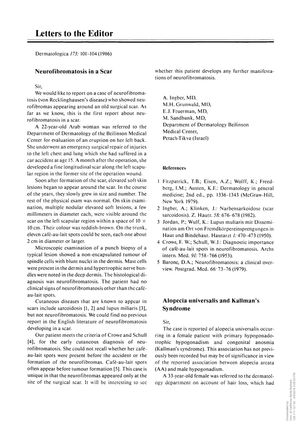Alopecia Universalis and Kallman's Syndrome
January 1986
in “
Dermatology
”
alopecia universalis Kallman's syndrome primary hypogonadotropic hypogonadism congenital anosmia cyclical oestrogens progesterone FSH LH human chorionic gonadotrophin hormone replacement therapy alopecia areata male hypogonadism Down's syndrome infertility hair loss Kallman's syndrome hypogonadism anosmia estrogen progesterone follicle-stimulating hormone luteinizing hormone hCG HRT AA male hypogonadism Down's syndrome infertility

TLDR A woman with Kallman's syndrome also developed alopecia universalis, a condition not previously linked to Kallman's.
The document reports a case of alopecia universalis in a 33-year-old female patient with Kallman's syndrome, a condition characterized by primary hypogonadotropic hypogonadism and congenital anosmia. This association between alopecia universalis and Kallman's syndrome had not been previously recorded. The patient's hair loss began at age 18 and progressed to complete absence of hair on the scalp, face, and body. Despite treatment with cyclical oestrogens, progesterone, FSH, LH, and human chorionic gonadotrophin, which allowed for an uneventful pregnancy, neither hormone replacement therapy nor pregnancy altered the course of her alopecia. The co-occurrence of alopecia universalis and Kallman's syndrome in this patient may be etiologically significant, especially considering previous reports of alopecia areata (AA) associated with male hypogonadism and the increased incidence of AA in patients with Down's syndrome, who also often have hypogonadism and infertility.




